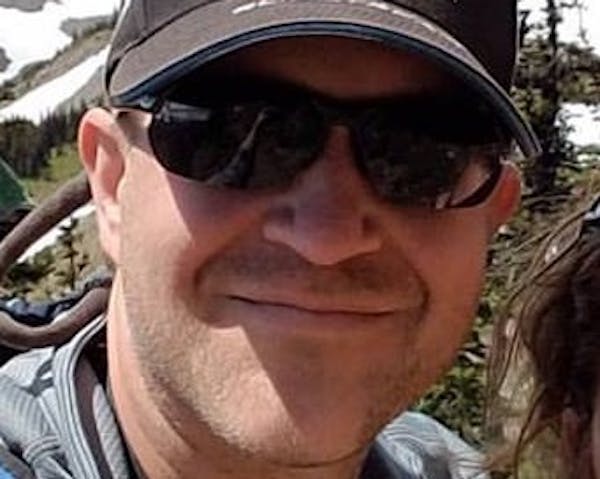SOUDAN, Minn. – A mink darted away from a picnic shelter at Lake Vermilion-Soudan Underground Mine State Park as park manager Jim Essig pointed to a new fishing pier through tall pines.
"You better get here early tomorrow if you want a spot," Essig said last week on the eve of the fishing opener.
The ribbon-cutting for Minnesota's newest state park is months away and years will pass before it is fully built. But crowds already are flocking to the fishing pier and its surrounding day-use area on Armstrong Bay. A few boat-in campsites have opened and crews are working toward a late-summer opening of the park's first campground.
Anticipated since 2008 when the Legislature authorized the park as part of a seminal land purchase from U.S. Steel, the project is on the cusp of serving outdoors interests in ways also beneficial to the area's economy. As the 19th-largest state park, Vermilion-Soudan is projected every year to bring in 250,000 additional tourists.
Boaters in the throng will only add to lake traffic now estimated at 16,000 to 18,000 launches a year. The growth in usage comes at a time when Lake Vermilion's prized walleye fishery is on the uptick. The Department of Natural Resources (DNR) this season relaxed the walleye slot limit, saying the population is in good condition in terms of abundance, size and age distribution.
Jeff Lovgren of the 2,400-member Vermilion Lake Association said he likes the idea of attracting new people to the area.
"We think showcasing Lake Vermilion and showing people what we have to offer in business and tourism is a plus," Lovgren said.
DNR State Parks and Trails Director Erika Rivers recalls how close U.S. Steel was to selling the five-mile stretch of rugged shoreline to private interests. During an early tour of the property with DNR officials, she saw stakes in the ground marking off prospective housing sites.
"We really saved a unique piece of the Minnesota landscape for all Minnesotans to enjoy," Rivers said.
State taxpayers purchased the 3,000-acre tract in 2010 for $18.2 million. The total tab since then has risen to $46.8 million and another $10 million is needed to build a lake lodge-styled visitor center that would be accessible from the water and land.
After years of watching earth-moving equipment carve out roads and park sites, Rivers said it's gratifying to see the emergence of a recognizable park.
Initially conceived as a stand-alone park, DNR leadership chose to combine it with the existing Soudan Underground Mine State Park to streamline the administration. It has taken until the spring of this year to figure out new signage for the park, with markers to be installed in the coming months.
Together, the two parcels provide a seamless 10-mile waterfront. The combined area includes two public access ramps to the water, two hiking loops, snowmobile and snowshoe trails, and additional picnic areas. The 33-site campground now under construction will be equipped with wireless internet service, electricity, flush toilets and a solar-powered shower facility.
The campground sits high on a ridge that overlooks the lake. It includes three group campsites, each with its own screened-in shelter, and a paved parking lot adjacent to a boat launch on Stunz Bay.
Funded but unbuilt is a second campground that will feature bare-bones camper cabins and wall tents.
"To be this far along in seven years is pretty remarkable," Rivers said.
Essig said the combined territory will make for the state's 19th-largest state park by area. Most remarkable, for Essig, is the park's value as a preservation center for state mining history, Native American settlement and ancient geologic formations.
Still central to the park's mission are hard-hat tours of the state's first iron ore mine, a shaft created by U.S. Steel that runs half a mile underground. Many visitors to the park will drive through Soudan, founded by the company as a housing location. The town's biggest quirk is a long row of boat houses built inches away from each other on the edge of Lake Vermilion.
Essig said the vintage, metal-sided boat houses are located within the state park but remain in the hands of private leaseholders, including many who have family ties to the old mine. The boat houses have been protected on several occasions by the state Legislature.
"It's been a challenge for us to manage it, but it's clearly part of the history of this place," Essig said.
He and Rivers said an unforeseen difficulty in developing the first campground is getting vegetation to grow on the rocky hilltop. That's one of the reasons camping at the site will be delayed at least until midsummer, and maybe beyond.
By design, the drive-in sites for individuals are separated from each other by at least a clump of woods to create more privacy.
Said Rivers: "We want the first experience to be a great experience."

Anderson: Building a new Waterville fish hatchery will help shorten the time between bites
Seth Lugo throws 7 scoreless innings, leads Royals past Tigers 8-0
Star driver Josef Newgarden fights back tears, accepts blame for breaking rules in IndyCar scandal
Oregon State and Washington State face player exodus amid realignment

